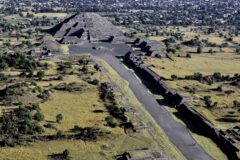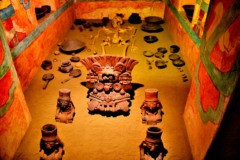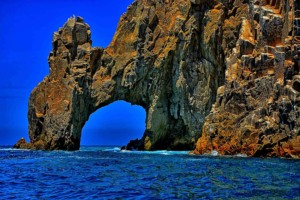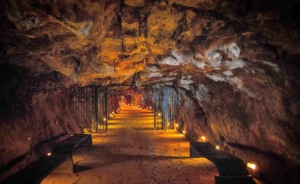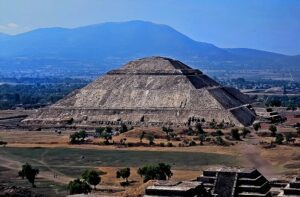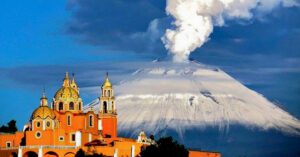The Mayan ruins of Palenque are situated in the lush jungles of Chiapas, Mexico, and are a testament to the incredible achievements of the ancient Maya civilization. This archaeological site, which was designated a UNESCO World Heritage Site in 1987, is celebrated for its remarkable architectural and artistic treasures. Palenque thrived during the Classic Period of Mayan history, with its peak of influence occurring between the 6th and 7th centuries AD.
Mayan Ruins of Palenque
The city was carefully planned and constructed, with grand temples, palaces, and other structures that showcase the Mayans’ advanced understanding of architecture and engineering. The Temple of the Inscriptions, one of the most famous structures in Palenque, contains a hidden tomb within that is believed to belong to the renowned Mayan ruler Pakal the Great.
The Palace is another notable edifice that displays intricate artwork and a well-thought-out design, with a central courtyard surrounded by numerous chambers and corridors. These chambers exhibit detailed carvings and inscriptions, offering insights into the history, mythology, and daily life of the Maya.
The Hieroglyphic Stairway, a grand stone staircase, also reveals a wealth of information through its hieroglyphic inscriptions, helping researchers piece together the city’s history. In addition to its remarkable architecture, Palenque’s location is captivating. Nestled amidst the tropical rainforest, the site blends harmoniously with its natural surroundings, offering a glimpse into the ancient Maya’s relationship with the environment.
Exploring the ruins of Palenque allows visitors to immerse themselves in the mystique of this ancient civilization, appreciating their artistic accomplishments and gaining a deeper understanding of Mayan culture. The site is not only a treasure trove for history enthusiasts but also a place of breathtaking natural beauty that invites contemplation of the Mayans’ achievements in art, science, and architecture.
Pre-Hispanic City and National Park of Palenque
The archaeological site of Palenque, nestled within the state of Chiapas, Mexico, stands as a remarkable testament to the excellence of the Maya civilization during the Classic Period. Its well-preserved architectural and sculptural wonders showcase the creativity of this ancient culture.
Established during the Late Preclassic era, likely around the beginning of the Christian era, the city’s first inhabitants shared cultural traits defining Maya civilization. However, it wasn’t until around 500 A.D. that Palenque rose to prominence as a powerful regional capital.
Facts about Palenque
This archaeological gem encompasses a vast 1,780-hectare area, containing nine zones, 49 square meters, and approximately 1,400 structures, of which only around 10% have been explored. Since the 18th century, Palenque has captivated travelers, explorers, and researchers due to its unique architectural style and cultural significance.
The city boasts a meticulously planned urban layout with monumental structures and grand plazas, distinguishing it as one of the largest and most impressive Mayan sites. The Palencano style of architecture is marked by refinement, delicate design, and a harmonious blend of artistic and architectural elements.
History of Palenque
The city’s architecture, exemplified by structures with vaulted roofs and elaborate reliefs, reflects the history and ideology of the ruling elite and incorporates the complex Maya writing and calendar systems. A hallmark of the site is the integration of architecture into the natural landscape, creating a city of unparalleled beauty with sculptures and depictions reflecting the intricacies of Mayan life.
Palenque, once known as Lakamha’ in the Itza language, flourished from 226 BC to around 799 AD. Despite its subsequent abandonment and overgrowth by the jungle, the city has been excavated and restored, revealing its grandeur. Hieroglyphic inscriptions on the city’s many monuments have allowed historians to piece together its history, particularly during the 5th century, and its rivalries with other city-states like Calakmul and Toniná.
The Temple of the Inscriptions, the final resting place of K’inich Janaab Pakal, also known as Pacal the Great, is one of the most famous structures at Palenque. By 2005, the explored area covered approximately 2.5 square kilometers, but the vast majority of the city remains hidden beneath the jungle canopy, with over a thousand structures awaiting discovery. The city’s history is marked by complex emblem glyphs in the titles of its rulers, hinting at an intricate early history.
The famous structures that stand today are believed to have been rebuilt in response to attacks from Calakmul and its client states in 599 and 611. Notably, K’inich Janaab’ Pakal was instrumental in the city’s revival, fostering a renaissance in art and architecture. His burial monument, the Temple of the Inscriptions, is renowned for its lengthy text and holds the position of the richest and best-preserved scientifically excavated burial in the ancient Americas.
However, as with other Classic Mayan city-states, Palenque faced increasing stress in the 8th century, which led to a decline in elite construction after 800. Eventually, the site was abandoned and reclaimed by the forest, remaining sparsely populated when the Spanish arrived in the 16th century.


